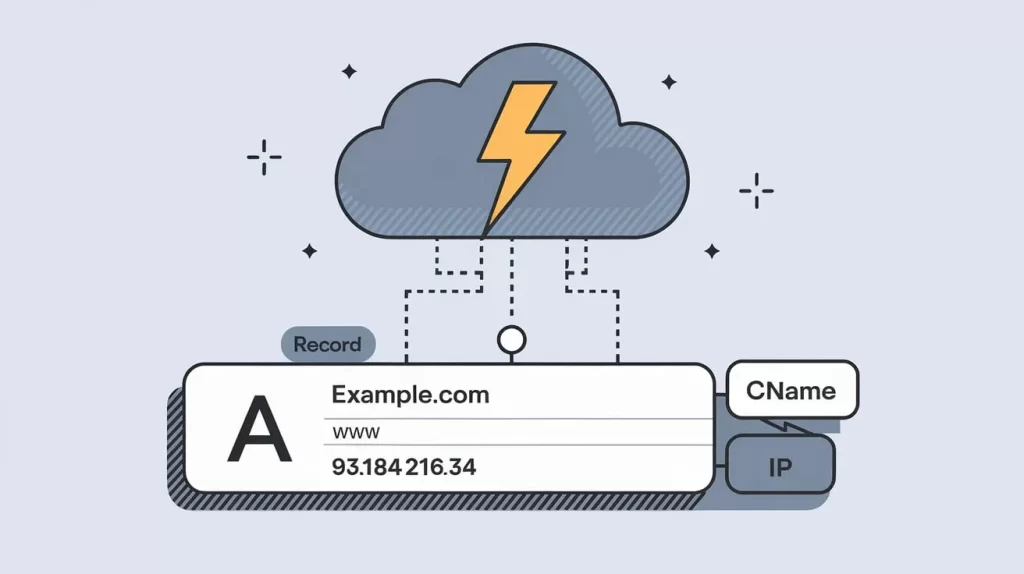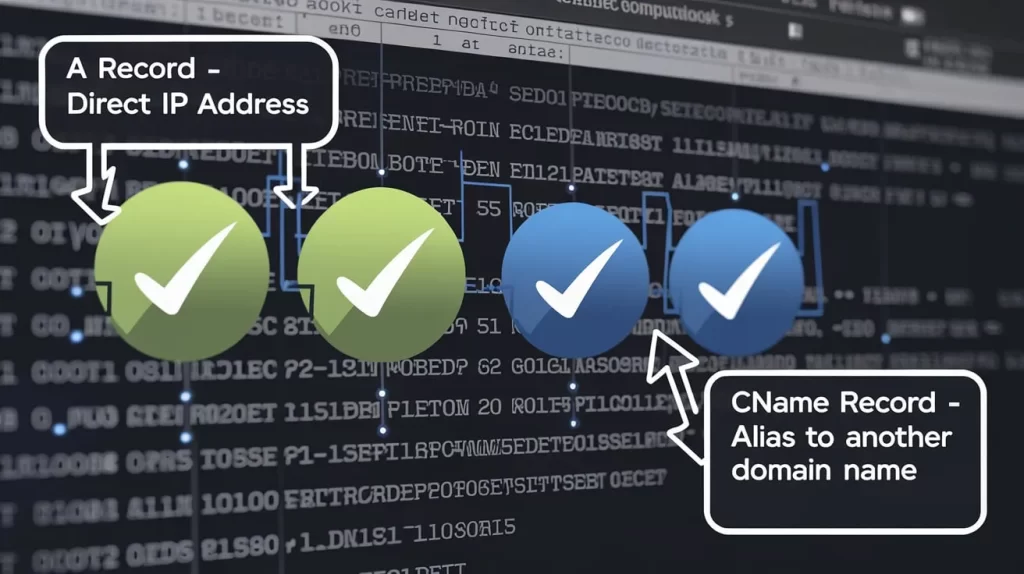In the world of domain name system (DNS) configuration, understanding different types of DNS records is essential for website management. Among the most commonly used DNS records are the A record and the CNAME record. While both serve important roles in connecting domain names to specific resources, they function quite differently. We will compare A records and CNAME records, explaining their purposes, differences, and when to use each type for your website setup. Whether you’re a web developer or a business owner looking to configure your website, understanding these DNS records is a must.

Introduction
DNS records are critical for the smooth operation of any website. They help map domain names to specific addresses, ensuring that users can access your site by typing a human-readable domain name instead of an IP address.
Among the many types of DNS records, the A record and CNAME record are two of the most commonly used. Both are responsible for linking domain names to specific resources, but they work in different ways. Understanding these differences is important for effective website management and ensuring that your domain setup is configured correctly.
What is a CNAME Record?
Definition and Purpose of a CNAME Record
A CNAME (Canonical Name) record is used to alias one domain to another. It acts as a pointer that tells the DNS server that a domain or subdomain should be treated as another domain name. Essentially, a CNAME record creates an alias for an existing domain.
For example, you may have multiple subdomains such as www.example.com and shop.example.com. If you want both to point to the same website, you could create a CNAME record for shop.example.com that points to www.example.com. When users visit shop.example.com, they will be automatically redirected to www.example.com.
How It Differs from an A Record
While the CNAME record points one domain to another, the A record maps a domain directly to an IP address. The CNAME record cannot point to an IP address directly—it must point to another domain name.
Here’s a quick summary of the difference:
- A record: Maps a domain to an IP address.
- CNAME record: Maps a domain to another domain.
When to Use a CNAME Record
You would use a CNAME record when you want to:
- Point multiple subdomains to the same website or service without setting up separate A records for each subdomain.
- Alias a domain to a service like a content delivery network (CDN) or a third-party service provider (e.g., blog.example.com to example.wordpress.com).
The CNAME record is particularly useful for pointing subdomains to the same server or resource. However, it cannot be used for the root domain (e.g., example.com), which must always use an A record.

When to Use an A Record vs. a CNAME
When to Use A Records
An A record is used to directly map a domain or subdomain to an IP address. This is the most straightforward way of connecting a domain name to a server. You should use an A record when:
- You are mapping the root domain to a server.
- You have a fixed IP address for your web server and want to associate that IP address with your domain name.
- You want to provide a direct, static link between your domain and your server.
For example, if your website is hosted at the IP address 192.168.1.1, you would create an A record to point example.com to that IP address.
When to Use CNAME Records
A CNAME record should be used when you want to point a domain or subdomain to another domain name. It’s not used for mapping directly to an IP address. You should use a CNAME record when:
- You need to alias one domain or subdomain to another domain.
- You want to use a service provider or external platform but still want the convenience of your own domain. For example, using a CNAME record to point shop.example.com to shop.example.net.
- You want to point multiple subdomains (like www, ftp, or mail) to the same domain without configuring multiple A records.
Key Points About When to Use Each:
- A record is used when you want to map directly to an IP address.
- CNAME record is used when you need to alias a domain to another domain.
- A record is best for root domains, while CNAME is ideal for subdomains.
Key Differences Between A Record and CNAME Record
Purpose
- A record: Directly maps a domain name to an IP address.
- CNAME record: Points a domain to another domain name.
Use Case
- A record: Typically used for root domains (e.g., example.com) and subdomains that require direct IP address mapping (e.g., ftp.example.com).
- CNAME record: Used for aliasing a domain or subdomain to another domain (e.g., www.example.com to example.com).
Efficiency
- A record: More efficient for root domains because it directly maps the domain to an IP address.
- CNAME record: Useful for subdomains but can be less efficient if used improperly on root domains.
Restrictions
- A record: Cannot point to another domain name—it must always point to an IP address.
- CNAME record: Cannot be used for the root domain, only for subdomains.
DNS Resolution
- A record: Faster resolution since it directly links the domain to an IP address.
- CNAME record: This can introduce an additional DNS lookup because the CNAME points to another domain, which must also be resolved to an IP address.
Flexibility
- A record: Less flexible because it maps a domain directly to an IP address, which requires updates if the IP address changes.
- CNAME record: More flexible because it can point to a different domain, allowing the target domain to handle any changes to IP addresses.
Key Takeaways
Both A records and CNAME records play crucial roles in DNS management, but they serve different purposes. Understanding when to use each type is essential for proper domain and website configuration.
- A record is best for directly pointing a domain or subdomain to an IP address, especially for root domains.
- CNAME record is ideal for aliasing subdomains to other domains, but it cannot be used for root domains.
By using A records and CNAME records appropriately, you can ensure that your website is configured efficiently and can handle traffic from multiple subdomains or services.
Common Use Cases
- A record: Pointing the root domain (example.com) to a web server’s IP address.
- CNAME record: Redirecting www.example.com to example.com or aliasing subdomains like blog.example.com to a third-party platform.
- A record: Directly links a domain to an IP address and is suitable for root domains.
- CNAME record: Points one domain or subdomain to another domain and is ideal for subdomains.
- Choose the appropriate record based on your needs: A record for IP mapping and a CNAME for domain aliasing.
Understanding the difference between A records and CNAME records will help you make informed decisions when configuring your domain settings and ensure your website runs smoothly.
